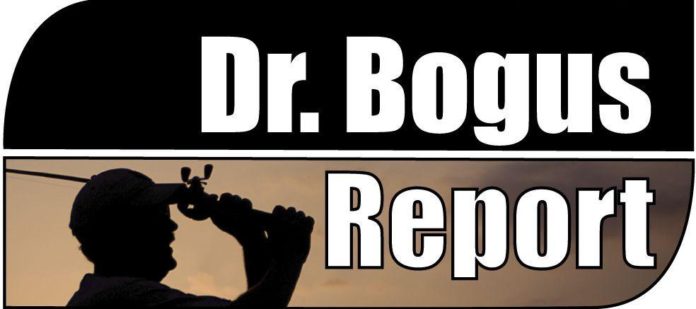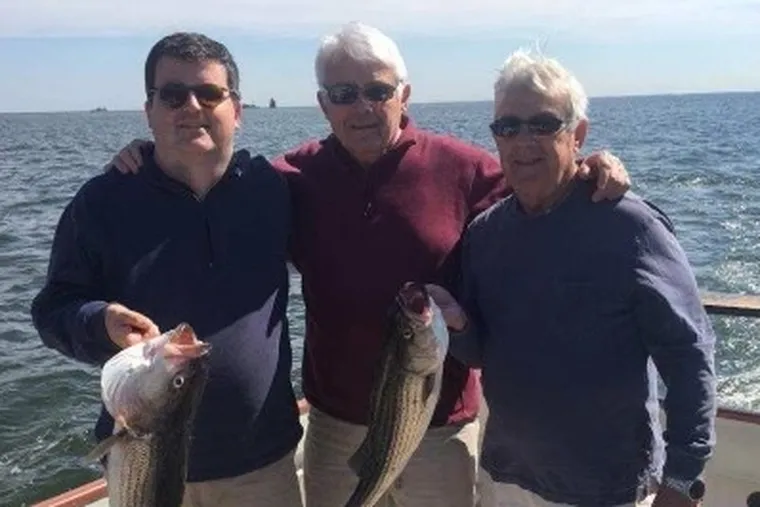This time of year, and especially this time of year in the winter 2021, fishing has been somewhere between slow and nonexistent, and it’s not just you or me!
I asked Capt. Gary Dubiel, who has fished out of Oriental for nearly 20 years (www.specfever.com), to give a synopsis on how the Neuse River fishing was so far this winter. His answer was, “This is as tough I’ve ever seen, a few striped bass and a few freshwater fish and a few speckled trout out there. The water is cold, dirty and very fresh. We’ve had lots of wind and lots of rain, probably the toughest winter can recall. I haven’t even caught a trout in several weeks.”
That about sums this winter up. I know there are still fish at the Cape Lookout Jetty and on the shoals and a few reds hiding behind the barrier islands just inside and outside the inlets, but that’s a hard sell for us winter anglers. Even my usual “winter” creeks are dead – no bait, no birds and seemingly no trout or reds either. Currently, even up-river Neuse around New Bern where the water is deeper, it’s so fresh the trout aren’t there either. As usual, there are at least still some big trout to be had in the New River.
So, this being the case, it’s time to stop crying in our beer or single malt beverage and think shad. The shad are coming from a long way, from Canada to spawn in their natal rivers in March and April. We see them her in the Neuse/Tar area, the Cape Fear River and in the Roanoke River as well.
According to Capt. Dubiel, there are a few hickory shad “scouts” showing already here in early February, even as water temperatures are only 42 to 46 degrees. Activity should pick up if we get a few sunny days in the 50s to get the river temperatures in the upper 40s or better into the low 50s. The hickory shad are the first to show, followed by the bigger American shad later in March, according to Dubiel.
Shad fishing is a sporty fish with most being caught and released after epic jumping battles on ultralight spin tackle or fly gear. Typical spin gear is a 6½- to 7-foot ultralight rod with a 1000 class reel and 10-pound braid line. Popular artificial baits include so-called tandem rigs with 1/8-oz. panfish jig and a twister tail body of 2 inches or less with the second tandem bait being a small silver or gold spoon.
The key, according to Capt. Dubiel, is visibility. The colors need to be bright and shiny. White, pink and chartreuse seem to be the best producers. Sometimes a single jig is used, but with a spinner to enhance the visibility. Interestingly, it is thought that the shad don’t feed during the spawn, but Capt. Dubiel has seen some activity indicating the shad might be feeding on very small fish.
For fly gear, most anglers go with a 4- or 6-weight rod, again with bright and flashy flies. Clousers work well since that will sink a bit, but it’s best to keep the fly 2 inches or shorter. Capt. Dubiel likes to fish with a 200-grain sinking tip to keep the fly in the midrange of depth. If you go deeper, you get into the bottom striper and trout bite.
Capt. Dubiel mentioned a couple of tips, unlike fishing for trout, drum or other predators where a jerky retrieve is great for getting a strike. He suggests for shad, a slow continuous retrieve is preferred. Also, he likes afternoon fishing on bright, sunny days. This warms the water and adds strike-provoking flash to your artificial baits in the afternoon sun.
Finally, many of us are boatless and river-bank bound, so where can we go for shad? There are a number of wildlife boat ramps for example up by Vanceboro that have fishing decks you can fish from, and that also can be very productive for the bank-side angler.
I hope this gives everyone a motivation for to go for late winter and early spring shad. These are feisty and fun fish to catch, like mini-tarpons. Much of this fishing in freshwater territory, so a freshwater license is required. By early March, we are likely to see the hickory shad moving up the Roanoke River as well, followed by the Americans and then the spawning stripers.
I have had several great trips for both shad and stripers on the Roanoke. Also be aware that the Tar and Neuse rivers currently have a moratorium on keeping stripers, and the Roanoke has a very restricted seasons where you can keep fish depending on where you are fishing, so log onto https://www.ncwildlife.org/ for the current regulations.
Bogus notes
1) Check me out at www.Facebook.com/Dr.Bogus.) Log onto my web site at www.ncoif.com. It’s repaired and up and running and better than ever.
2) “Ask Dr. Bogus” is on the radio every Monday at 7:30 a.m. WTKF 107.1 FM and 1240 AM. The show is also replayed on Sunday morning at 6 a.m. Callers may reach me at 800-818-2255.
3) I’m located at 118 Conch Ct. in Sea Dunes, just off Coast Guard Road, Emerald Isle, NC 28594. The mailing address is P.O. Box 5225, Emerald Isle, NC 28594. Don’t forget a gift certificate for your favorite angler for fishing lessons or my totally Bogus Fishing Report subscription. Please stop by at any time and say “Hi” or call 252-354-4905.
Credit: Source link






























